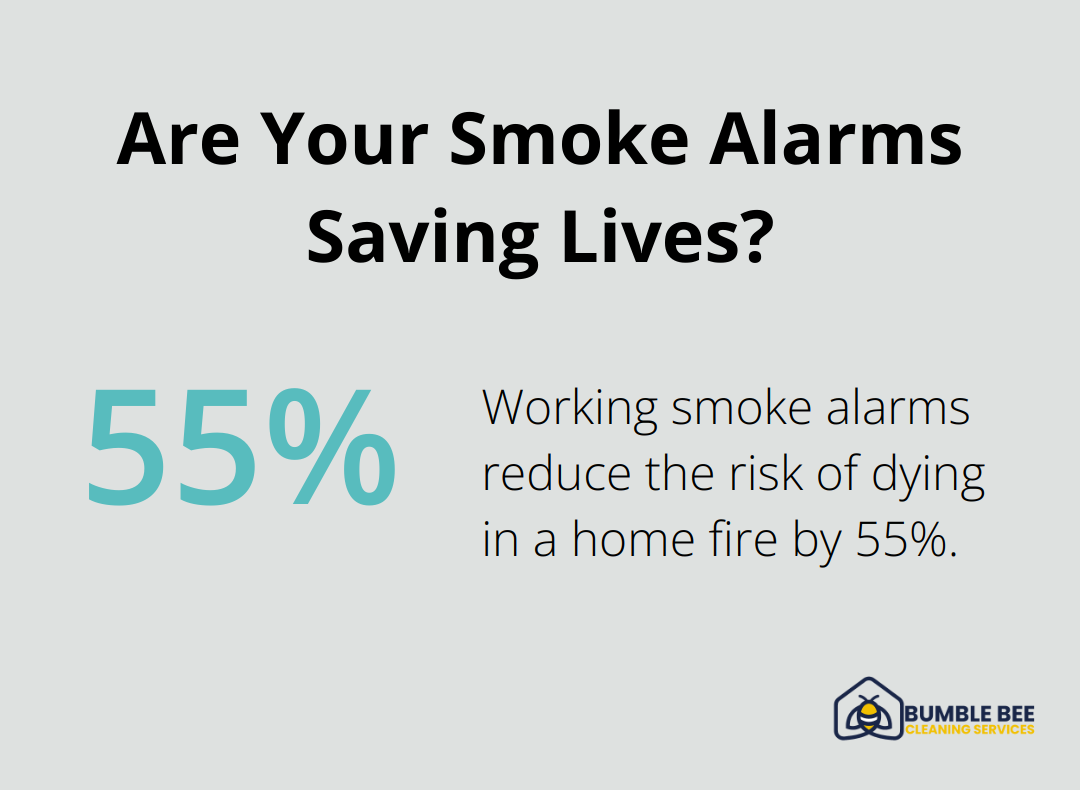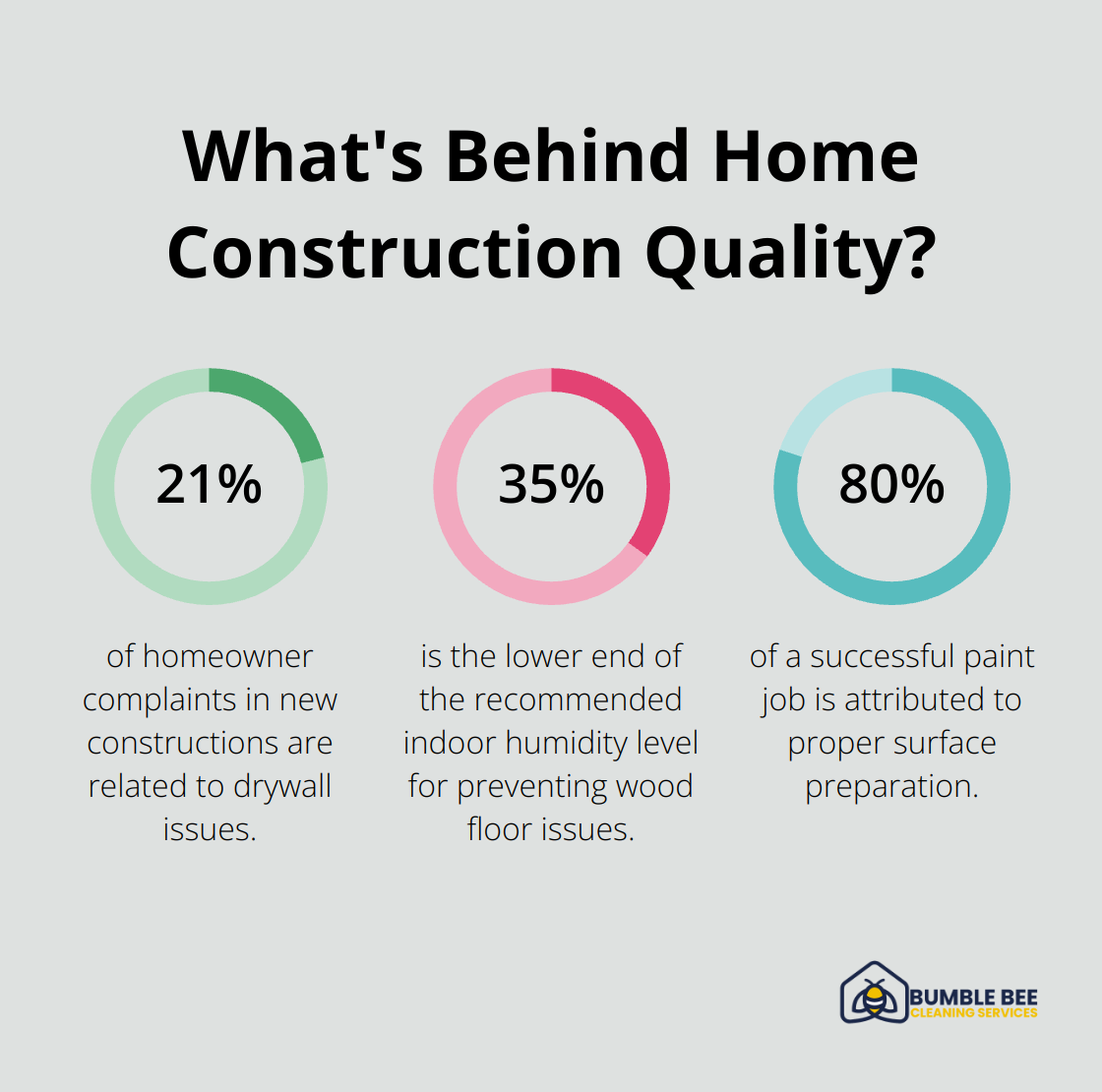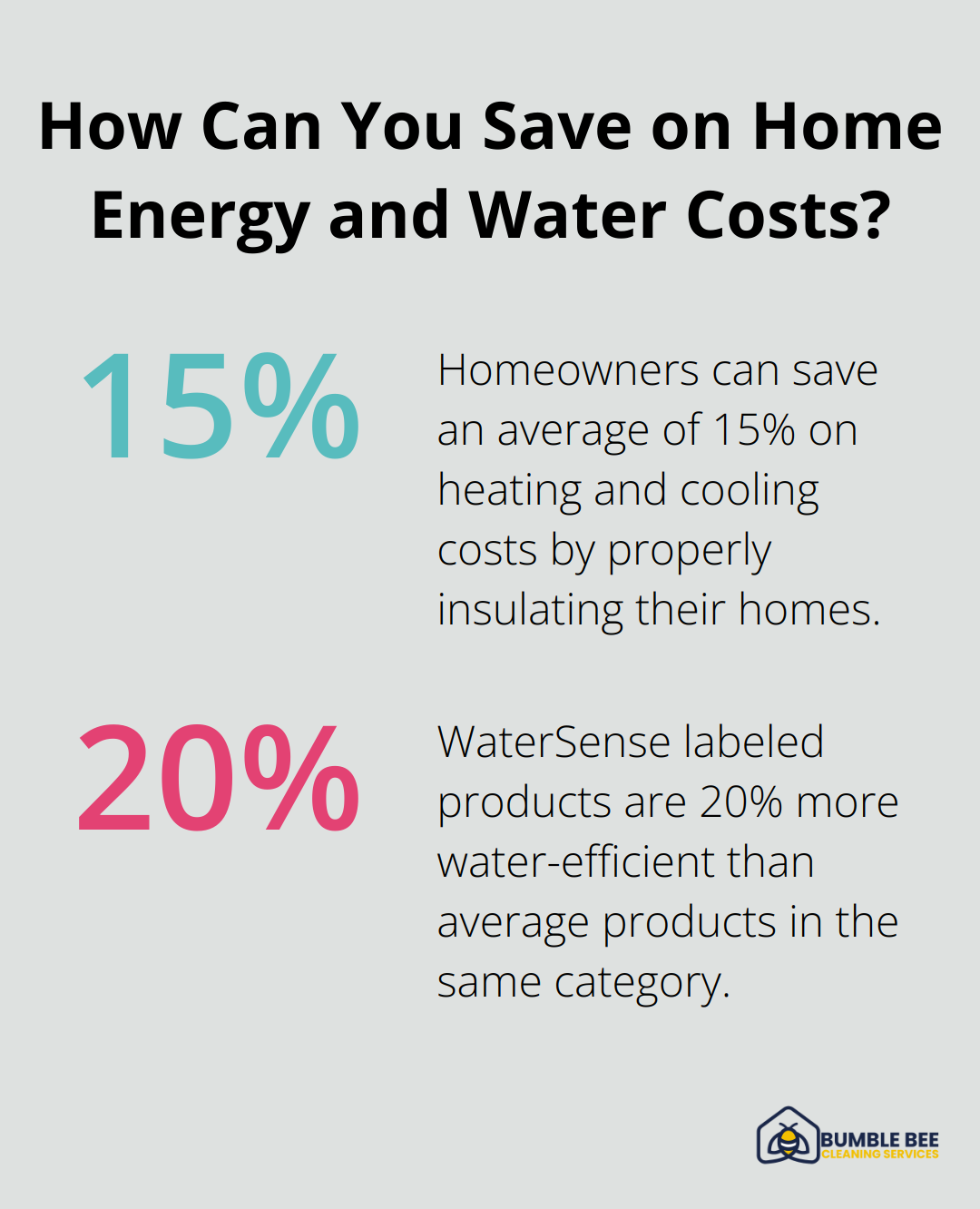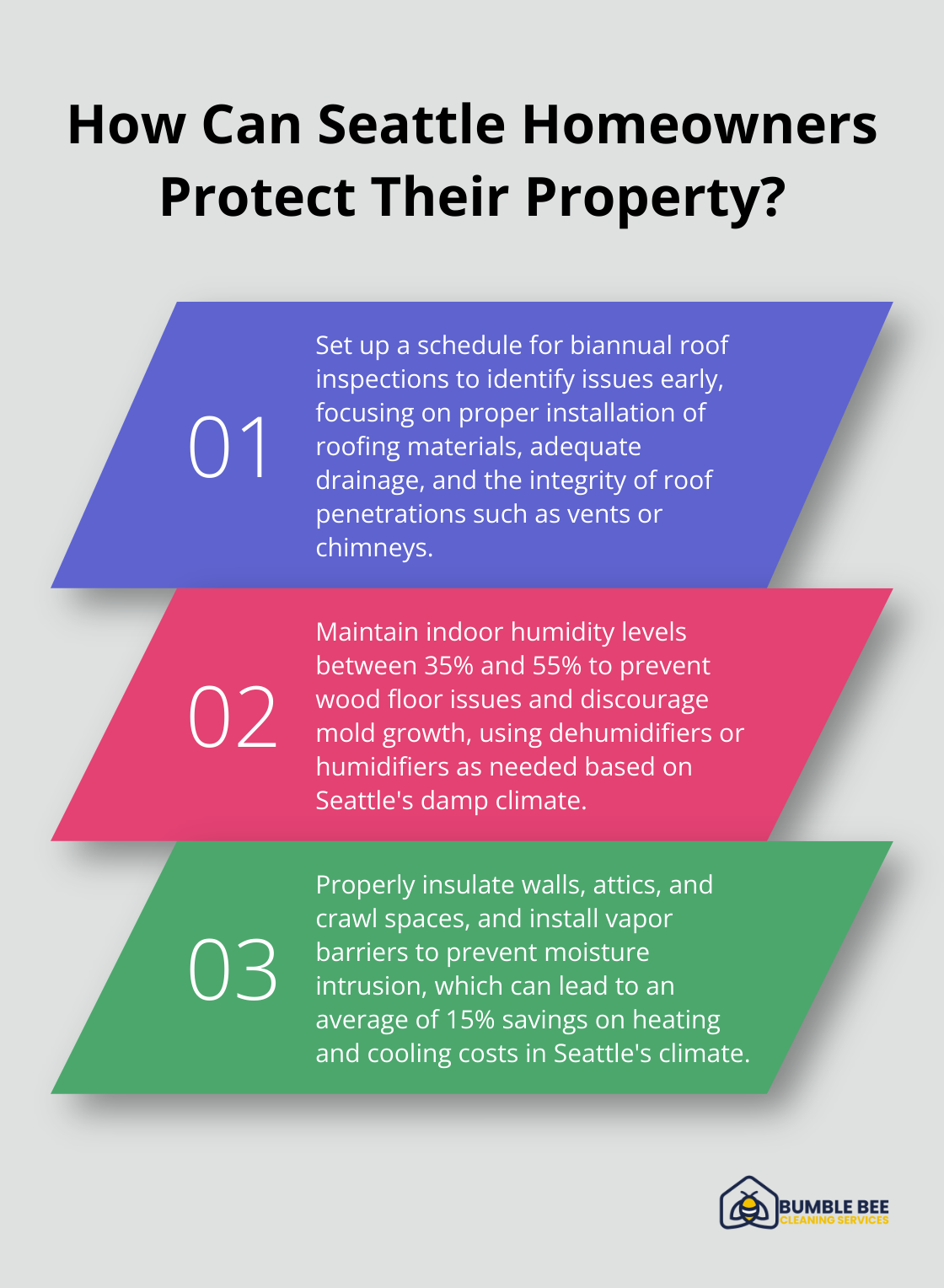Post-construction inspections are vital for ensuring the quality and safety of newly built structures in Seattle. At Bumble Bee Cleaning Services, we understand the importance of these thorough evaluations.
This guide will walk you through the key elements to look for during a post-construction inspection, from structural integrity to interior finishes and environmental factors. By following these guidelines, you’ll be better equipped to assess the overall quality and safety of your new building project.
Is Your Building Safe and Sound?
Post-construction inspections play a vital role in ensuring the structural integrity and safety of newly built structures in Seattle. These inspections cover several key areas essential for the long-term stability and functionality of a building.
Foundation and Framing Inspection
The foundation serves as the bedrock of any structure, and its inspection is of utmost importance. Inspectors search for signs of settling, cracks, or water damage that could compromise the building’s stability. In Seattle, where seismic activity poses a concern, proper reinforcement and compliance with local building codes become essential.

Framing inspection involves checking the structural skeleton of the building. This includes verification of correctly positioned load-bearing walls and quality standards for framing materials. A registered civil or structural engineer or registered architect is permitted to serve as a special inspector when approved by the building official.
Exterior and Roofing System Assessment
The exterior envelope of a building acts as its first line of defense against the elements. In Seattle’s rainy climate, proper waterproofing is essential. Inspectors assess siding, flashing, and seals around windows and doors to prevent water intrusion.
Roof inspections hold particular importance. The National Roofing Contractors Association recommends biannual roof inspections to identify issues early. During post-construction inspections, experts check for proper installation of roofing materials, adequate drainage, and the integrity of any roof penetrations (such as vents or chimneys).
Electrical and Plumbing Systems Check
Electrical system inspections are crucial for safety. The Electrical Safety Foundation International reports that electrical malfunctions cause over 50,000 house fires annually. Inspectors verify that all wiring, outlets, and fixtures are correctly installed and meet current electrical codes.
Plumbing inspections focus on proper installation of pipes, fixtures, and water heaters. They also check for leaks and ensure adequate water pressure throughout the system. In Seattle, where water conservation is a priority, inspectors may also verify the installation of low-flow fixtures.
HVAC and Fire Safety Systems Evaluation
HVAC system evaluations ensure that heating, ventilation, and air conditioning units are correctly installed and function efficiently. This is important for both comfort and energy efficiency. Seattle City Light helps homeowners and renters save energy, money, and the environment with innovative programs and ideas.
Fire safety inspections are non-negotiable. They include checks of smoke detectors, fire alarms, sprinkler systems, and emergency exits. The National Fire Protection Association emphasizes the importance of these systems, noting that working smoke alarms reduce the risk of dying in a home fire by 55%.
As we move forward to examine interior finishes and quality, it’s important to note that these structural and safety elements form the foundation for a well-constructed and secure building. The next section will explore how the finishing touches contribute to the overall quality and livability of the space.
Does Your Interior Finish the Job?
The interior finishes and quality of a newly constructed building transform a structure into a livable space. This aspect of post-construction inspection focuses on aesthetic and functional elements that contribute to the overall comfort and appeal of the environment.
Walls and Ceilings: Beyond Surface Appearance
Wall and ceiling finish inspections require more than a cursory glance. Inspectors must identify signs of poor workmanship such as visible seams, uneven textures, or bubbling in wallpaper. The National Association of Home Builders reports that drywall issues account for 21% of homeowner complaints in new constructions. Corners and edges demand special attention, as imperfections often occur in these areas.
Flooring: The Base of Interior Comfort
Flooring installation assessment plays a critical role in both aesthetics and longevity. Inspectors must check for consistent color and pattern in tiles or wood planks. They need to ensure the absence of gaps, lifting edges, or hollow sounds when walking across the floor. The National Wood Flooring Association recommends indoor humidity levels between 35% and 55% to prevent wood floor issues (a factor worth considering in Seattle’s damp climate).
Cabinetry and Countertops: Where Function Meets Style
Kitchen and bathroom inspections involve thorough examination of cabinets for proper alignment, smooth operation of drawers and doors, and secure mounting. Countertops must be level, with well-sealed seams and properly installed backsplashes. The National Kitchen and Bath Association suggests a minimum of 15 inches of countertop space on each side of a cooktop for safety and functionality.
Windows and Doors: Portals to Comfort
Window and door functionality extends beyond simple opening and closing. Inspectors must check for proper weatherstripping, smooth operation of locks and handles, and absence of drafts. In Seattle, where energy efficiency takes precedence, windows must meet or exceed the U-factor of 0.26 required by the Washington State Energy Code for fixed standard windows.
Paint and Trim: The Final Touch
High-quality paint jobs exhibit even coverage without visible brush strokes or roller marks. Trim work must be precisely cut and securely fastened, with neat caulking at joints. The Painting and Decorating Contractors of America emphasizes the importance of proper surface preparation (stating that it accounts for 80% of a successful paint job).

As we move forward to examine environmental and efficiency factors, it becomes clear that the quality of interior finishes significantly impacts the overall livability and comfort of a newly constructed space. The next section will explore how sustainable practices and energy-efficient features contribute to the long-term value and performance of the building.
After the inspection, it’s crucial to tackle post-construction debris to ensure a safe and spotless home. This final step in the process helps reveal any hidden imperfections that might have been overlooked during the initial inspection.
Is Your Building Green and Efficient?
Indoor Air Quality: A Breath of Fresh Air
Post-construction inspections must focus on indoor air quality. On average, Seattle experiences 14.2 unhealthy pollution days a year, with 7 owing to high ozone and 7.2 owing to high PM2.5. This fact underscores the importance of proper ventilation and air filtration systems.

Seattle’s high humidity levels make mold growth a significant concern. Inspectors use specialized equipment to measure humidity levels, volatile organic compounds (VOCs), and particulate matter. The American Lung Association suggests maintaining indoor humidity levels between 30% and 50% to discourage mold growth and dust mites.
Insulation and Weatherproofing: Seattle’s Climate Defense
Proper insulation and weatherproofing are essential in Seattle’s climate. Inspectors check for adequate insulation in walls, attics, and crawl spaces. They also verify the installation of vapor barriers to prevent moisture intrusion.
Homeowners can save an average of 15% on heating and cooling costs by properly insulating their homes, according to the U.S. Department of Energy. In Seattle, where heating degree days significantly outnumber cooling degree days, this can lead to substantial energy savings.
Energy Efficiency: Lower Bills, Smaller Footprint
Energy efficiency assessments involve checking the building’s overall thermal performance. This includes verification of energy ratings for appliances, lighting fixtures, and HVAC systems. The Seattle Energy Code requires new buildings to meet stringent energy efficiency standards.
Inspectors also look for proper sealing around windows and doors to prevent air leaks. The U.S. Department of Energy notes that air leaks can account for 25-40% of the energy used for heating and cooling a home.
Water Conservation: Every Drop Counts
Water conservation is another important aspect of efficiency in Seattle. Inspectors check for low-flow fixtures and proper installation of water-efficient appliances. The Environmental Protection Agency’s WaterSense program reports that WaterSense labeled products are 20% more water-efficient than average products in the same category.
Sustainable Materials: Building for the Future
Verification of sustainable materials used in construction is becoming increasingly important. This includes checks for locally sourced materials, recycled content, and low-VOC finishes. The U.S. Green Building Council’s LEED certification program provides guidelines for sustainable material use in construction.
Final Thoughts
Post-construction inspections play a vital role in ensuring the safety, quality, and efficiency of newly built structures in Seattle. These comprehensive evaluations cover structural integrity, interior finishes, and environmental factors, providing valuable insights into the overall construction quality. Professional inspectors bring expertise, specialized equipment, and an objective eye to the process, uncovering hidden issues that might otherwise go unnoticed.

The next crucial step after inspection is post-construction cleaning, which enhances the appearance of the newly built space and contributes to a healthier indoor environment. Bumble Bee Cleaning Services specializes in post-construction cleaning, offering comprehensive solutions to transform your newly inspected space into a pristine, move-in ready environment. Their team understands the unique challenges of post-construction cleaning and works diligently to address every detail.
The combination of professional post-construction inspections with expert cleaning services ensures that newly built spaces are structurally sound, efficient, clean, and ready for occupancy. This approach sets the stage for years of comfortable and safe use of the new structure. Property owners who invest in these services can enjoy the long-term value and comfort of their newly constructed spaces.
